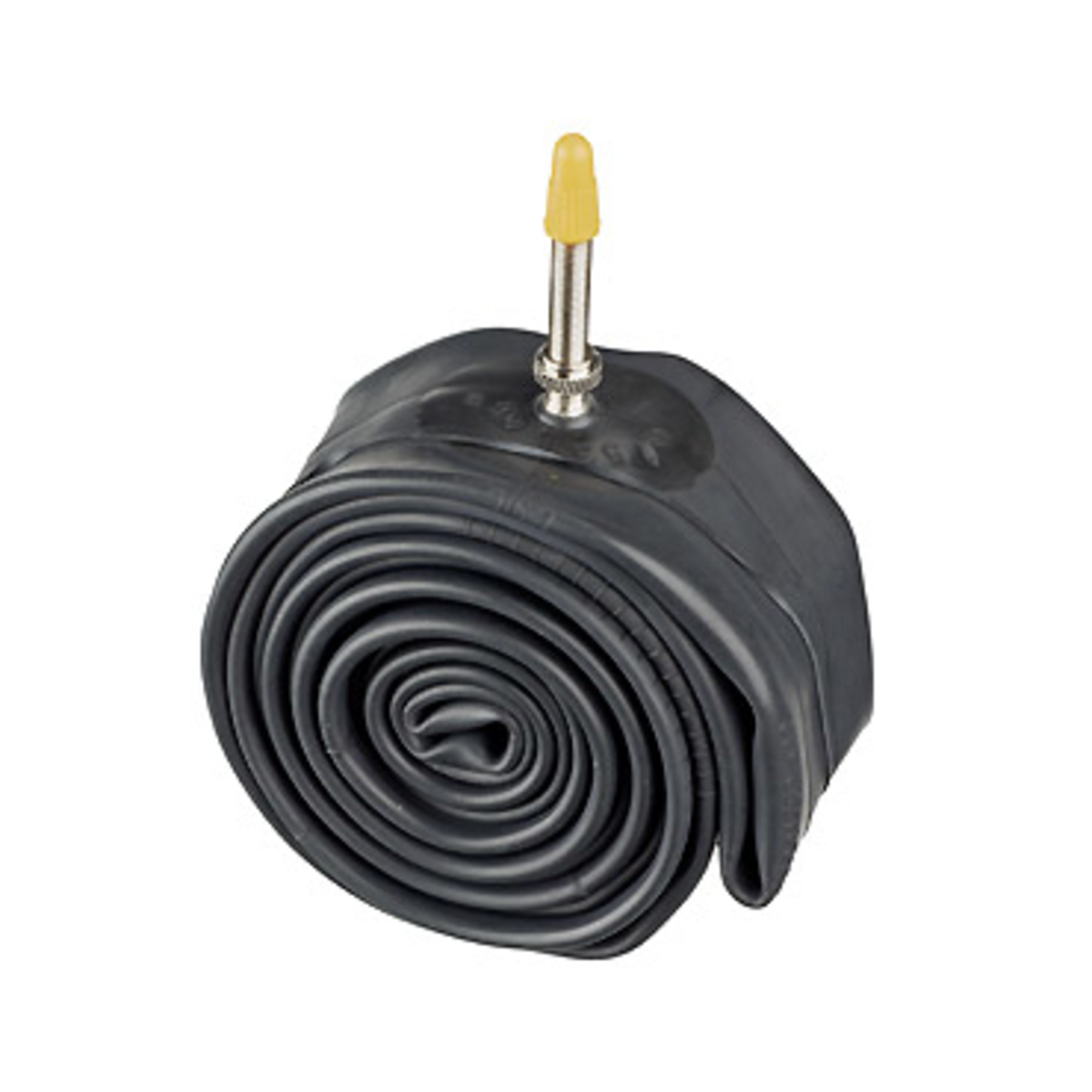MTB
MTB inner tubes
Inner tubes for mountain bikes: butyl and latex, Presta and Schrader valve, 26" and 29"
Wheels and tyres of a mountain bike ridden on uneven and rocky roads are exposed to extreme strains. This refers to the outer tyre and to the inner tube as well. Both have to be very resistant. Due to the fact that the tyre pressure has to be adjusted according to the road conditions, tumbling frictions occur. That is why tubes for mountain bikes require special production processes, which take these particular strains into account. With regard to the material used and to their sizes, the tube types offered in this category are specially designed for mountain bike tyres.
Do you have questions about MTB tubes?
Will my ROSE mountain bike be tubeless or with inner tubes?
We at ROSE are convinced of the advantages of tubeless tyres for mountain bikes (even if many of our colleagues continue to ride with inner tubes). We will still send your new MTB with pre-assembled inner tubes. This is simply due to the limited shelf life of the sealant. Otherwise, we would not be able to ensure optimum tyre inflation. Another reason: If you prefer to ride your MTB with a tube, you don't want to clean the sealant off your tyres first.
How many grams does an MTB inner tube weigh?
* Tubes for Plus tyres and puncture protection tubes not included.
Classic butyl tubes weigh around 200 grams per tube, while light versions can take a few grams off the scales. Latex tubes are slightly lighter and, what’s more, they also improve rolling resistance. However, if you want to reduce the weight even further, you have to go for the more expensive thermoplastic tube. In the light version, it even beats tubeless systems in terms of weight and it also provides the best puncture protection among inner tubes.
| Butyl | Butyl Light | Latex | TPU | TPU Light | |
|---|---|---|---|---|---|
| 26" | approx. 190–210 g | approx. 110–130 g | approx. 125 g | approx. 80 g | approx. 42 g |
| 27,5" | approx. 200–220 g | approx. 140–150 g | approx. 135 g | approx. 82 g | approx. 44 g |
| 29" | approx. 210–230 g | approx. 160–170 g | approx. 145 g | approx. 85 g | approx. 46 g |
* Tubes for Plus tyres and puncture protection tubes not included.
Does tubeless sealant also work with an MTB inner tube?
No, neither the sealant nor the tube are designed for this. However, there are puncture protection tubes that are pre-filled with a special sealant. As with a tubeless tyre, punctures in the inner tube are sealed automatically. Puncture sprays are also available for standard inner tubes, which are used after a puncture. The tyre is inflated with compressed air and the puncture is sealed simultaneously.
Can I change from a Presta valve to a Schrader valve on an MTB?
Not without further ado. A Schrader valve requires a rim drilling of 8.5 mm – in contrast to 6.5 mm for Presta. For a tube with a Schrader valve, you would have to drill out the hole in the rim further. Although this is usually possible with a sufficiently wide aluminium rim, it is not recommended without being familiar with it. If you just want to inflate your bike at the petrol station, you can easily do this using a valve adapter from Presta to Schrader valve.
Can you ride 26 inch tubes on a 27.5 inch rim?
Yes and no. It is generally advisable to use an MTB tube in the right size – that means a 650B inner tube on 650B rims. However, when production of the new 27.5" wheel standard was not yet available during the introductory phase, even tyre manufacturers used old 26" tubes to test the new 27.5" tyres. However, the tyres then sit a little tighter on the rim – and of course this invalidates any liability claims. But if you can't find a 27.5-inch MTB tube on your bike holiday at the end of the world, a 26-inch tube can be an option as an “emergency solution”.
;BackgroundColor=ffffff)
;BackgroundColor=ffffff)